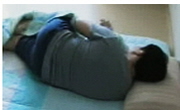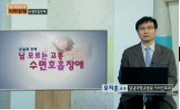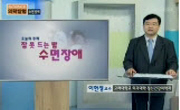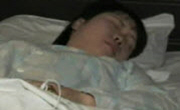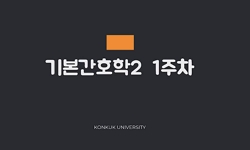목적 : Spielman의 수면모델을 근간으로 간호대학생의 수면양상에 영향을 미치는 요인을 파악하기 위함이다. 방법 : 간호학과에 재학 중인 임상실습을 하는 3, 4학년 총 119명을 대상으로 자가 ...
http://chineseinput.net/에서 pinyin(병음)방식으로 중국어를 변환할 수 있습니다.
변환된 중국어를 복사하여 사용하시면 됩니다.
- 中文 을 입력하시려면 zhongwen을 입력하시고 space를누르시면됩니다.
- 北京 을 입력하시려면 beijing을 입력하시고 space를 누르시면 됩니다.
임상실습기간 중 간호대학생의 수면 영향요인 : Spielman의 수면장애 모델을 근간으로 = Influencing Factors on Sleep Patterns during Clinical Practice Weeks among Nursing Students : Based on Spielman’s Model
한글로보기https://www.riss.kr/link?id=T13979969
- 저자
-
발행사항
충주 : 건국대학교 일반대학원, 2016
-
학위논문사항
학위논문(석사) -- 건국대학교 일반대학원 , 간호학과(GLOCAL) 간호학전공 , 2016. 2
-
발행연도
2016
-
작성언어
한국어
- 주제어
-
KDC
517.31 판사항(5)
-
발행국(도시)
충청북도
-
형태사항
87 : 삽도, 챠트 ; 26 cm
-
일반주기명
지도교수 : 최희정
- 소장기관
-
0
상세조회 -
0
다운로드
부가정보
국문 초록 (Abstract)
목적 : Spielman의 수면모델을 근간으로 간호대학생의 수면양상에 영향을 미치는 요인을 파악하기 위함이다.
방법 : 간호학과에 재학 중인 임상실습을 하는 3, 4학년 총 119명을 대상으로 자가 보고식 설문지와 액티그래프를 이용하여 자료를 수집하였다. 수집된 자료는 SPSS 21.0 이용하여 t-test, ANOVA, 회귀분석 하였다.
결과 : 간호대학생 119명의 자고보고식 수면의 질 측정에서 70.6%의 학생은 수면의 질이 낮았다. 액티그래피에서 간호대학생의 평균 수면시간은 4.34시간으로 총 수면시간 5시간 이하 학생이 58.5%이었고, 수면효율성은 평균 82.55% 였다. 회귀모형 분석결과, 수면의 질에 일주기수면유형(β=.27, ρ=.005), 알코올 섭취(β=.20, ρ=.032)가 영향요인으로 나타났다. 총 수면시간에 좌식생활(β=-.23, ρ=.018), 주간졸림증(β=-.29, ρ=.003)이 영향요인으로 나타났다.
결론 : 임상실습기간 중 간호대학생의 상당 수가 수면장애를 겪고 있다. 이들의 수면에 미치는 영향요인은 자가보고형식의 설문지를 통한 주관적수면측정과 객관적인 생리적수면측정방법에 따라 다르게 나타났다. 일주기수면유형이 저녁형인 학생들은 수면의 질이 낮게 나타났고, 좌식생활과 주간졸림증은 수면부족의 원인으로 나타났다. 그러므로 추후 수면장애를 연구할 때 주관적 측정과 함께 객관적 측정을 병행하여 수면의 주관적, 객관적 측면을 모두 고려하는 것이 필요한 것으로 생각된다.
주제어 : 간호대학생, 수면, 액티그래피
다국어 초록 (Multilingual Abstract)
Purpose: The purpose of this study was to identify sleep patterns of nursing students, to examine influencing on factors sleep patterns in based on Spielman’s model. Methods: Participants were 119 junior and senior nursing students who were in the ...
Purpose: The purpose of this study was to identify sleep patterns of nursing students, to examine influencing on factors sleep patterns in based on Spielman’s model.
Methods: Participants were 119 junior and senior nursing students who were in the clinical practice period. Self-report questionnaires and actigraphy were used for data collection. Data were analyzed descriptive statistics, t-test or ANOVA, correlation and regression with SPSS/WIN 21.0 program.
Results: When sleep was measured by self-report questionnaire (Korean version of Modified Leeds Sleep Evaluation Questionnaire: KMLSEQ), 84 students (70.6%) showed poor sleep quality. Mean total sleep time measured by actigraphy is 4.34 hours, and the number of student who sleeps for 5 hours and less was 70 (58.5%). Mean sleep efficiency was 82.55%, and the number of students showed low sleep efficiency (less than 85%) was 67 (56.3%). The factors affecting subjective sleep pattern measured by KMLSEQ were circadian sleep type (β=.27, ρ=.005) and alcohol use (β=.20, ρ=.032). The factors affecting total sleep time were sedentary behavior (β=-.23, ρ=.018) and daytime sleepiness (β=-.29, ρ=.003).
Conclusion: Many nursing students in clinical practice period perceived sleep disturbance. Affecting factors on perceived sleep measured by self-report questionnaire and objective sleep evaluated by physiologic measure were different. The evening type of students perceived poor sleep quality, however, sedentary life style and daytime sleepiness caused short sleep time. Sleep consists of subjective and subjective characteristics, therefore, more studies measure objective sleep characteristics are needed.
목차 (Table of Contents)
- Ⅰ. 서론 .......................................................................................................................... 1
- 1. 연구의 필요성 ....................................................................................................... 1
- 2. 연구목적 ................................................................................................................. 4
- 3. 용어정의 ................................................................................................................. 4
- Ⅰ. 서론 .......................................................................................................................... 1
- 1. 연구의 필요성 ....................................................................................................... 1
- 2. 연구목적 ................................................................................................................. 4
- 3. 용어정의 ................................................................................................................. 4
- Ⅱ. 문헌고찰 .................................................................................................7
- 1. 대학생 수면 ..............................................................................................................7
- 2. Spielman’s 3P model ...........................................................................................10
- Ⅲ. 연구 방법 ............................................................................................16
- 1. 연구 설계 ................................................................................................................16
- 2. 연구의 개념적 기틀 .............................................................................................16
- 3. 연구 대상 ................................................................................................................18
- 4. 연구 도구 ................................................................................................................18
- 5. 자료 수집 방법 .....................................................................................................23
- 6. 연구의 윤리적 고려...............................................................................................23
- 7. 자료 분석 방법.......................................................................................................24
- Ⅳ. 연구결과 ........................................................................................................... 25
- 1. 대상자의 일반적 특성 ..................................................................................... 25
- 2. 대상자의 수면 관련 특성 ....................................................................... 26
- 3. Spielman’s 3P model 구성 요인별 특성 ............................................ 30
- 4. 관련변수에 따른 수면 특성 ................................................................... 33
- 5. 수면특성과 관련변수 간의 상관관계 .......................................................... 35
- 6. 수면특성 변수 간의 상관관계 ....................................................................... 37
- 7. 수면 영향 요인 .................................................................................................. 38
- Ⅴ. 논의 .......................................................................................................... 40
- 1. 임상실습기간 중 간호대학생의 수면양상................................................... 40
- 2. 임상실습기간 중 간호대학생의 수면 영향요인 ....................................... 44
- Ⅵ. 결론 및 제언 ......................................................................................... 49
- 1. 결론 ............................................................................................................ 49
- 2. 제언 ............................................................................................................ 52
- 참고문헌 ........................................................................................................................ 53
- 부 록 ........................................................................................................................ 66
- ABSTRACT .................................................................................................................. 77





